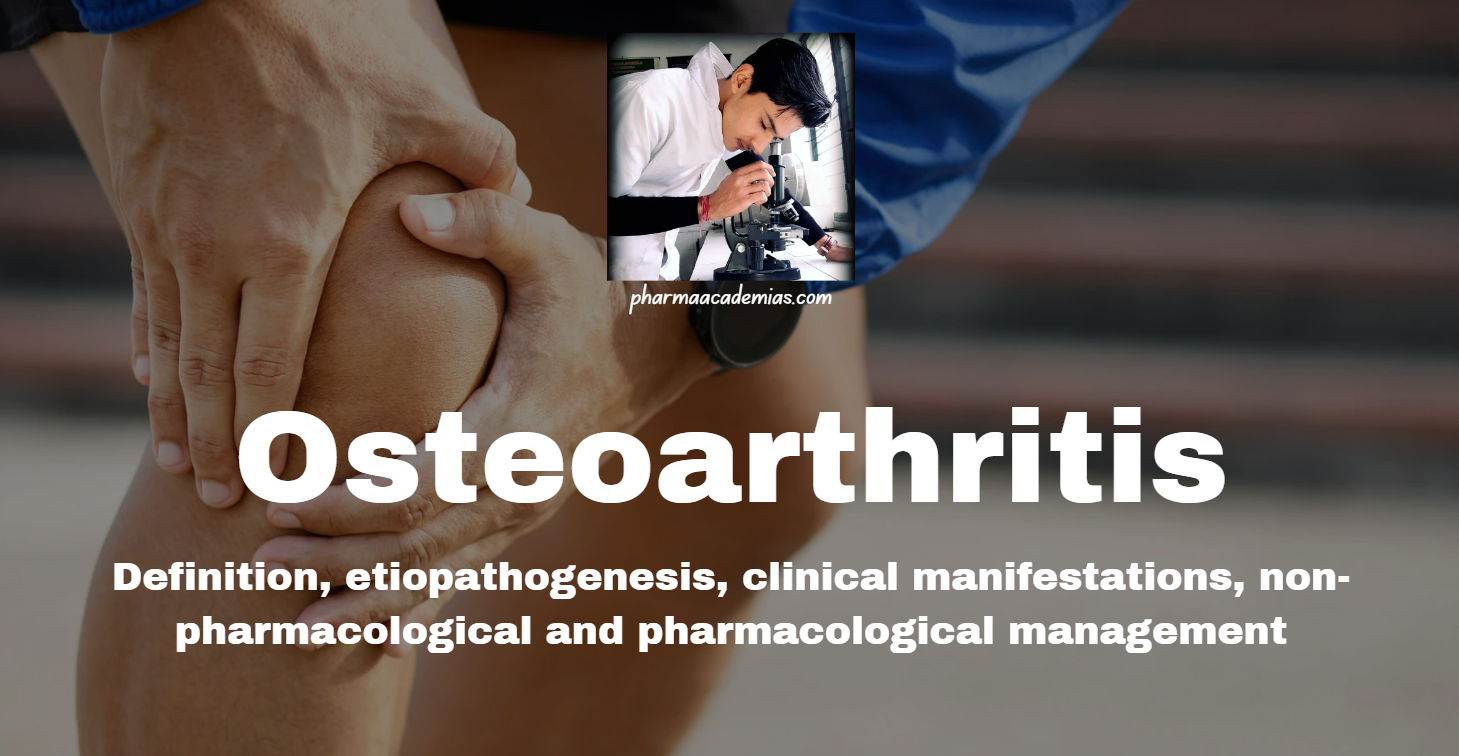Osteoarthritis (OA) is the most common form of arthritis and a leading cause of chronic joint pain and disability. It is characterized by the progressive degeneration of articular cartilage within synovial joints, along with changes in the underlying bone and surrounding soft tissues. OA primarily affects weight-bearing joints such as the knees, hips, spine, and hands.

Etiopathogenesis of Osteoarthritis
The development of osteoarthritis involves a complex interplay of biomechanical, genetic, and biochemical factors:
1. Biomechanical Factors: Excessive mechanical stress or abnormal joint loading due to factors such as obesity, joint malalignment, joint instability, or repetitive joint injury can lead to cartilage damage and osteoarthritis.
2. Genetic Predisposition: Genetic factors contribute to an individual’s susceptibility to OA, including variations in genes encoding for cartilage matrix proteins, enzymes involved in cartilage metabolism, and inflammatory mediators.
3. Biochemical Changes: Imbalance between cartilage synthesis and degradation processes, along with chronic low-grade inflammation within the joint, contributes to the breakdown of cartilage matrix components such as collagen and proteoglycans.
4. Age and Wear-and-Tear: Aging is a significant risk factor for OA, as cumulative wear-and-tear over time can compromise the integrity of joint structures and diminish their reparative capacity.
Clinical Manifestations
The clinical presentation of osteoarthritis varies depending on the joint(s) involved but typically includes the following features:
1. Joint Pain: Persistent joint pain, often worsened by activity and relieved by rest, is the hallmark symptom of OA. Initially, pain may occur only during movement but can progress to become constant.
2. Joint Stiffness: Morning stiffness lasting less than 30 minutes is common in OA, particularly after periods of inactivity.
3. Joint Swelling: Mild to moderate joint swelling may be present, primarily due to synovial inflammation and joint effusion.
4. Joint Instability: As OA progresses, joint instability, characterized by feelings of giving way or buckling, may occur, especially in weight-bearing joints like the knees.
5. Reduced Range of Motion: Gradual loss of joint flexibility and decreased range of motion, particularly during weight-bearing activities, can occur due to cartilage loss and bony changes.
6. Crepitus: Audible or palpable crepitus (grating or grinding sensation) may be present during joint movement due to irregularities in joint surfaces.
Non-pharmacological Management of Osteoarthritis
Non-pharmacological interventions are essential components of OA management and aim to reduce pain, improve joint function, and enhance overall quality of life. These include:
1. Weight Management: Maintaining a healthy weight reduces mechanical stress on weight-bearing joints and may help alleviate symptoms.
2. Exercise Therapy: Low-impact exercises such as walking, swimming, and cycling can improve joint mobility, strengthen supporting muscles, and reduce pain.
3. Physical Therapy: Tailored exercise programs, manual therapy, and modalities such as heat or cold therapy can help improve joint function and alleviate pain.
4. Joint Protection Techniques: Using assistive devices, ergonomic aids, and avoiding activities that exacerbate symptoms can help minimize joint stress.
5. Occupational Therapy: Adaptive techniques and assistive devices can facilitate activities of daily living and reduce joint strain.
6. Patient Education: Providing information about OA, joint protection strategies, and self-management techniques empowers patients to actively participate in their care.
Pharmacological Management of Osteoarthritis
Pharmacological treatment aims to relieve pain, improve function, and reduce inflammation in OA. Commonly used medications include:
1. Analgesics: Acetaminophen is often recommended as a first-line analgesic for mild to moderate OA pain. Nonsteroidal anti-inflammatory drugs (NSAIDs) such as ibuprofen or naproxen may be used for more severe pain or inflammation.
2. Topical Agents: Topical NSAIDs, capsaicin cream, or lidocaine patches can provide localized pain relief with fewer systemic side effects.
3. Intra-articular Injections: Corticosteroid injections directly into affected joints can provide short-term pain relief and reduce inflammation, particularly for acute exacerbations of OA.
4. Viscosupplementation: Hyaluronic acid injections (viscosupplementation) can help lubricate and cushion the joint, providing symptomatic relief, especially in knee OA.
5. Disease-Modifying Osteoarthritis Drugs (DMOADs): Emerging therapies targeting specific pathways involved in OA pathogenesis, such as bone morphogenetic proteins or anti-nerve growth factor antibodies, are under investigation but not yet widely used.
6. Nutritional Supplements: Glucosamine and chondroitin sulfate supplements are popular among OA patients, although evidence for their efficacy is mixed.
Surgical Management:
In cases of severe OA that do not respond to conservative measures, surgical interventions such as joint replacement (arthroplasty) may be necessary to relieve pain and restore function, particularly in hip or knee OA.
Conclusion:
Osteoarthritis is a common degenerative joint disease characterized by progressive cartilage loss, joint pain, and functional impairment. Effective management of OA requires a multimodal approach encompassing non-pharmacological interventions, pharmacological treatments, and in some cases, surgical interventions. Patient education, self-management strategies, and interdisciplinary collaboration are key components of OA care aimed at optimizing outcomes and improving quality of life.

